Similar presentations:
Correlation Regression
1.
2.
Causation3.
CausationCausation is any cause that produces an effect.
This means that when something happens (cause)
something else will also always happen(effect).
An example:
When you run you burn calories.
As you can see with the example our cause is running
while burning calories is our effect. This is something that
is always, because that's how the human body works.
4.
CorrelationCorrelation measures the relationship between two things.
Positive correlations happen when one thing goes up, and
another thing goes up as well.
An example: When the demand for a product is high, the
price may go up. As you can see, because the demand is
high the price may be high.
Negative correlations occur when the opposite happens.
When one thing goes up, and another goes down.
A correlation tells us that two variables are related, but we
cannot say anything about whether one caused the other.
5.
CorrelationCorrelations happen when:
A causes B
B causes A
A and B are consequences of a common cause, but do not
cause each other
There is no connection between A and B, the correlation is
coincidental
6.
Causation and CorrelationCausation and correlation can happen at the same time.
But having a correlation does not always mean you have
a causation.
A good example of this:
There is a positive correlation between the number of
firemen fighting a fire and the size of the fire. This means
the more people at the fire, tends to reflect how big the
fire is. However, this doesn’t mean that bringing more
firemen will cause the size of the fire to increase.
7.
Correlation or Causation?As people’s happiness level increases, so does their
helpfulness.
This would be a correlation.
Just because someone is happy does not always mean
that they will become more helpful. This just usually tends
to be the case.
8.
Correlation or Causation?Dogs pant to cool
themselves down.
This would be a causation.
When a dog needs to cool itself down it will pant. This is
not something that tends to happen, it is something that is
always true.
9.
Correlation or Causation?Among babies, those who are held more tend to cry less.
This would be a correlation.
Just because a baby is held often does not mean that it will
cry less. This just usually tends to be the case.
10.
Let's think of our ownCorrelation:
Causation:
11.
Quick ReviewCausation is any cause that produces an effect.
Correlation measure the relationship between two things.
12.
Correlation13. The Question
Are two variables related?Does
e.
g. skills and income
Does
e.
one increase as the other increases?
one decrease as the other increases?
g. health problems and nutrition
How can we get a numerical measure of
the degree of relationship?
14. Scatterplots
Graphically depicts the relationshipbetween two variables in two dimensional
space.
15. Direct Relationship
Average Number of Alcoholic DrinksPer Week
Scatterplot:Video Games and Alcohol Consumption
20
18
16
14
12
10
8
6
4
2
0
0
5
10
15
20
Average Hours of Video Games Per Week
25
16. Inverse Relationship
Exam ScoreScatterplot: Video Games and Test Score
100
90
80
70
60
50
40
30
20
10
0
0
5
10
15
Average Hours of Video Games Per Week
20
17. An Example
Does smoking cigarettes increase systolicblood pressure?
Plotting number of cigarettes smoked per
day against systolic blood pressure
Fairly
moderate relationship
Relationship is positive
18. Trend?
170160
150
140
130
SYSTOLIC
120
110
100
0
SMOKING
10
20
30
19. Smoking and BP
Note relationship is moderate, but real.Why do we care about relationship?
What
would conclude if there were no
relationship?
What if the relationship were near perfect?
What if the relationship were negative?
20. Heart Disease and Cigarettes
Data on heart disease and cigarettesmoking in 21 developed countries Data
have been rounded for computational
convenience.
The
results were not affected.
21. The Data
Surprisingly, theU.S. is the first
country on the list-the country
with the highest
consumption and
highest mortality.
Country Cigarettes CHD
1
11
26
2
9
21
3
9
24
4
9
21
5
8
19
6
8
13
7
8
19
8
6
11
9
6
23
10
5
15
11
5
13
12
5
4
13
5
18
14
5
12
15
5
3
16
4
11
17
4
15
18
4
6
19
3
13
20
3
4
21
3
14
22. Scatterplot of Heart Disease
CHD Mortality goes on Y axisWhy?
Cigarette consumption on X axis
Why?
What does each dot represent?
Best fitting line included for clarity
23.
3020
10
{X = 6, Y = 11}
0
2
4
6
8
10
Cigarette Consumption per Adult per Day
12
24. What Does the Scatterplot Show?
As smoking increases, so does coronaryheart disease mortality.
Relationship looks strong
Not all data points on line.
This
gives us “residuals” or “errors of
prediction”
To
be discussed later
25. Correlation
Co-relationThe relationship between two variables
Measured with a correlation coefficient
Most popularly seen correlation
coefficient: Pearson Product-Moment
Correlation
26. Types of Correlation
Positive correlationHigh
values of X tend to be associated with
high values of Y.
As X increases, Y increases
Negative correlation
High
values of X tend to be associated with
low values of Y.
As X increases, Y decreases
No correlation
No consistent tendency for values on Y to
increase or decrease as X increases
27. Correlation Coefficient
A measure of degree of relationship.Between 1 and -1
Sign refers to direction.
Based on covariance
Measure
of degree to which large scores on
X go with large scores on Y, and small scores
on X go with small scores on Y
28.
29. Covariance
The formula for co-variance is:Cov XY
( X X )(Y Y )
N 1
How this works, and why?
When would covXY be large and
positive? Large and negative?
30. Example
Country X (Cig.) Y (CHD)Example
1
2
3
4
5
6
7
8
9
10
11
12
13
14
15
16
17
18
19
20
21
Mean
SD
Sum
11
9
9
9
8
8
8
6
6
5
5
5
5
5
5
4
4
4
3
3
3
5.95
2.33
26
21
24
21
19
13
19
11
23
15
13
4
18
12
3
11
15
6
13
4
14
14.52
6.69
(X X )
5.05
3.05
3.05
3.05
2.05
2.05
2.05
0.05
0.05
-0.95
-0.95
-0.95
-0.95
-0.95
-0.95
-1.95
-1.95
-1.95
-2.95
-2.95
-2.95
(Y Y ) ( X X ) * (Y Y )
11.48
6.48
9.48
6.48
4.48
-1.52
4.48
-3.52
8.48
0.48
-1.52
-10.52
3.48
-2.52
-11.52
-3.52
0.48
-8.52
-1.52
-10.52
-0.52
57.97
19.76
28.91
19.76
9.18
-3.12
9.18
-0.18
0.42
-0.46
1.44
9.99
-3.31
2.39
10.94
6.86
-0.94
16.61
4.48
31.03
1.53
222.44
31. Example
Covcig .&CHD( X X )(Y Y ) 222.44
11.12
N 1
21 1
What the heck is a covariance?
I thought we were talking about
correlation?
32. Correlation Coefficient
Pearson’s Product Moment CorrelationSymbolized by r
Covariance ÷ (product of the 2 SDs)
Cov XY
r
s X sY
Correlation is a standardized covariance
33. Calculation for Example
CovXY = 11.12sX = 2.33
sY = 6.69
cov XY
11.12
11.12
r
.713
s X sY
(2.33)(6.69) 15.59
34. Example
Correlation = .713Sign is positive
Why?
If sign were negative
What
would it mean?
Would not change the degree of relationship.
35. Factors Affecting r
Range restrictionsLooking
at only a small portion of the total
scatter plot (looking at a smaller portion of
the scores’ variability) decreases r.
Reducing variability reduces r
Nonlinearity
The
Pearson r measures the degree of linear
relationship between two variables
If a strong non-linear relationship exists, r will
provide a low, or at least inaccurate measure
of the true relationship.
36. Factors Affecting r
OutliersOverestimate
Correlation
Underestimate Correlation
37. Countries With Low Consumptions
Data With Restricted RangeTruncated at 5 Cigarettes Per Day
20
18
CHD Mortality per 10,000
16
14
12
10
8
6
4
2
2.5
3.0
3.5
4.0
4.5
Cigarette Consumption per Adult per Day
5.0
5.5
38. Outliers
39. Testing Correlations
So you have a correlation. Now what?In terms of magnitude, how big is big?
Small
correlations in large samples are “big.”
Large correlations in small samples aren’t
always “big.”
Depends upon the magnitude of the
correlation coefficient
AND
The size of your sample.
40.
Regression41.
„Regression” refers to theprocess of fitting a simple
line to datapoints,
Historically, linear
regression was first used
to explain the height of
men by the height of their
fathers.
42. What is regression?
How do we predict one variable fromanother?
How does one variable change as the
other changes?
Influence
43. Linear Regression
A technique we use to predict the mostlikely score on one variable from those
on another variable
Uses the nature of the relationship (i.e.
correlation) between two variables to
enhance your prediction
44. Linear Regression: Parts
Y - the variables you are predictingi.e.
X - the variables you are using to predict
i.e.
dependent variable
independent variable
- your predictions (also known as Y’)
Ŷ
45. Why Do We Care?
We may want to make a prediction.More likely, we want to understand the
relationship.
How
fast does CHD mortality rise with a
one unit increase in smoking?
Note: we speak about predicting, but
often don’t actually predict.
46. An Example
Cigarettes and CHD Mortality againData repeated on next slide
We want to predict level of CHD
mortality in a country averaging 10
cigarettes per day.
47. The Data
47The Data
Based on the data we have
what would we predict the
rate of CHD be in a country
that smoked 10 cigarettes on
average?
First, we need to establish a
prediction of CHD from
smoking…
Country Cigarettes CHD
1
11
26
2
9
21
3
9
24
4
9
21
5
8
19
6
8
13
7
8
19
8
6
11
9
6
23
10
5
15
11
5
13
12
5
4
13
5
18
14
5
12
15
5
3
16
4
11
17
4
15
18
4
6
19
3
13
20
3
4
21
3
14
48.
30We predict a
CHD rate of
about 14
20
Regression
Line
10
For a country that
smokes 6 C/A/D…
0
2
4
6
8
10
Cigarette Consumption per Adult per Day
48
12
49. Regression Line
FormulaYˆ bX a
Yˆ= the predicted value of Y (e.g. CHD
mortality)
X = the predictor variable (e.g. average
cig./adult/country)
50. Regression Coefficients
“Coefficients” are a and bb = slope
Change
in predicted Y for one unit change
in X
a = intercept
value
of Yˆ when X = 0
51. Calculation
Slopesy
cov XY
b 2 or b r
sX
sx
or b
Intercept
N XY X Y
N X ( X )
2
a Y bX
2
52. For Our Data
CovXY = 11.12s2X = 2.332 = 5.447
b = 11.12/5.447 = 2.042
a = 14.524 - 2.042*5.952 = 2.32
53. Note:
The values we obtained are shown onprintout.
The intercept is the value in the B
column labeled “constant”
The slope is the value in the B column
labeled by name of predictor variable.
54. Making a Prediction
Second, once we know the relationshipwe can predict
Yˆ bX a 2.042 X 2.367
Yˆ 2.042*10 2.367 22.787
We predict 22.77 people/10,000 in a
country with an average of 10 C/A/D
will die of CHD
55. Accuracy of Prediction
Finnish smokers smoke 6 C/A/DWe predict:
Yˆ bX a 2.042 X 2.367
Yˆ 2.042*6 2.367 14.619
They actually have 23 deaths/10,000
Our error (“residual”) =
23 - 14.619 = 8.38
a
large error
55
56.
30CHD Mortality per 10,000
Residual
20
Prediction
10
0
2
4
6
8
10
Cigarette Consumption per Adult per Day
56
12
57. Residuals
When we predict Ŷ for a given X, we willsometimes be in error.
Y – Ŷ for any X is a an error of estimate
Also known as: a residual
We want to Σ(Y- Ŷ) as small as possible.
BUT, there are infinitely many lines that can do
this.
Just draw ANY line that goes through the
mean of the X and Y values.
Minimize Errors of Estimate… How?
58. Minimizing Residuals
Again, the problem lies with thisdefinition of the mean:
(
X
X
)
0
So, how do we get rid of the 0’s?
Square them.
59. Regression Line: A Mathematical Definition
The regression line is the line which whendrawn through your data set produces the
smallest value of:
2
ˆ
(Y Y )
Called the Sum of Squared Residual or
SSresidual
Regression line is also called a “least squares
line.”
59






























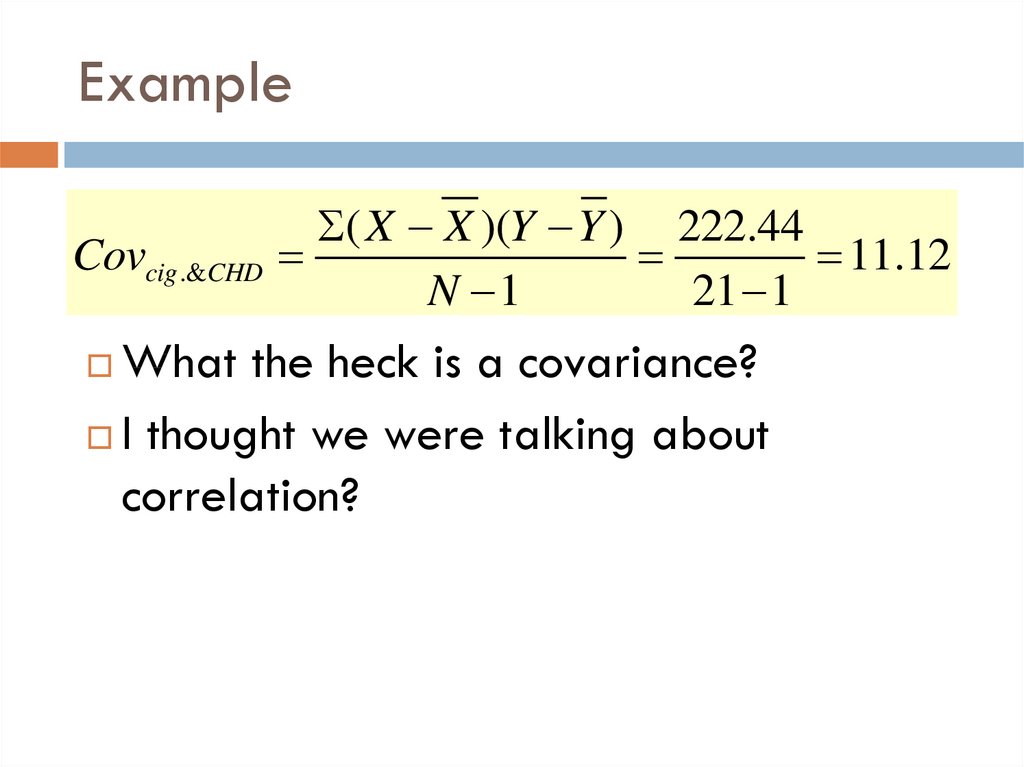



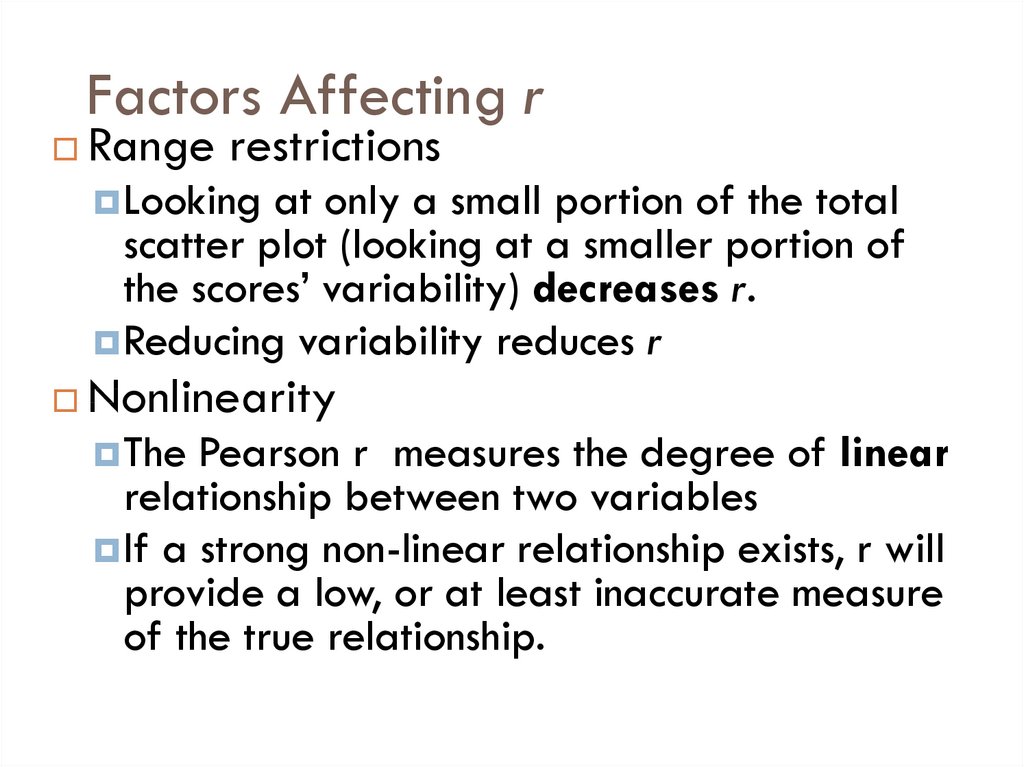










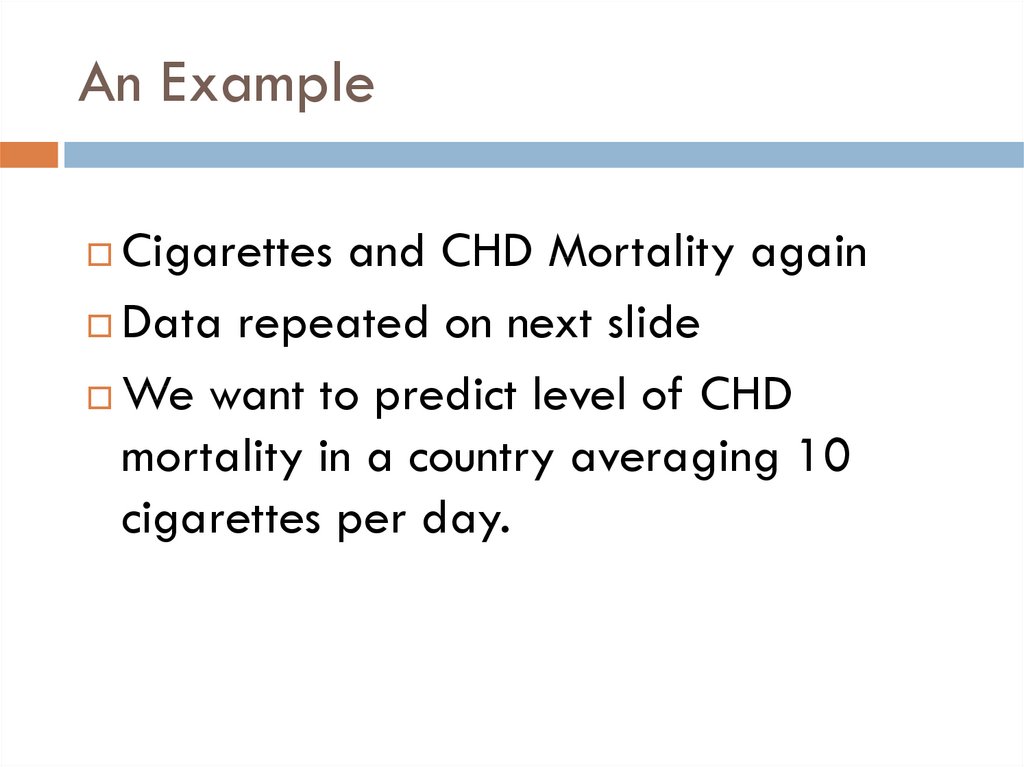

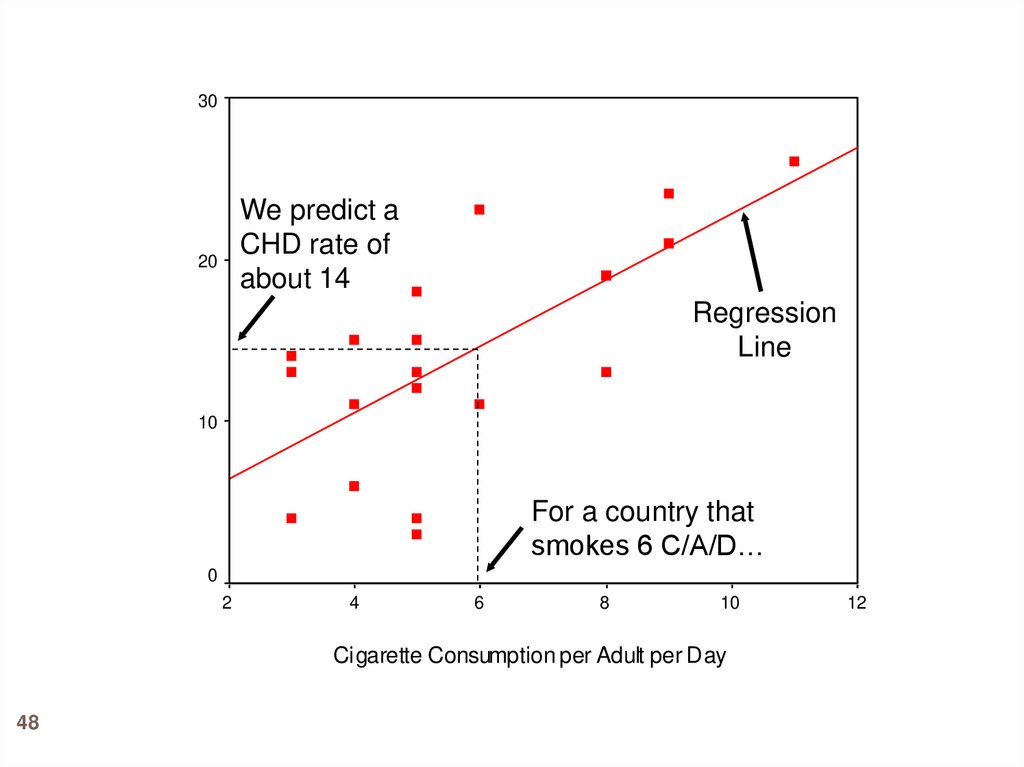

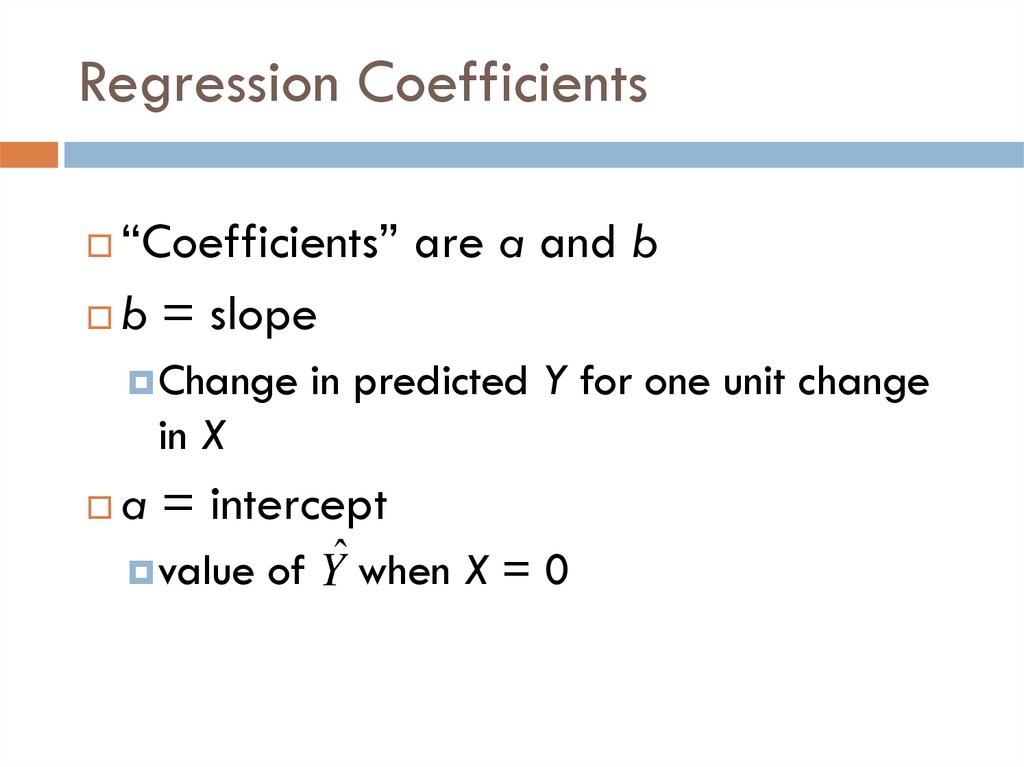



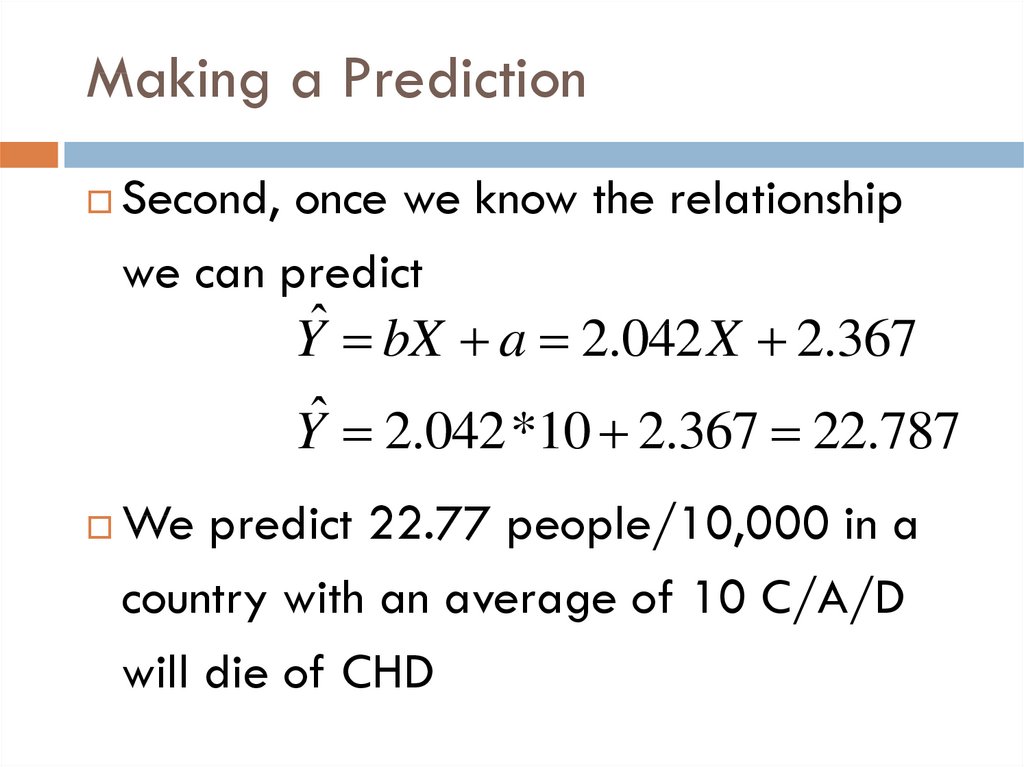



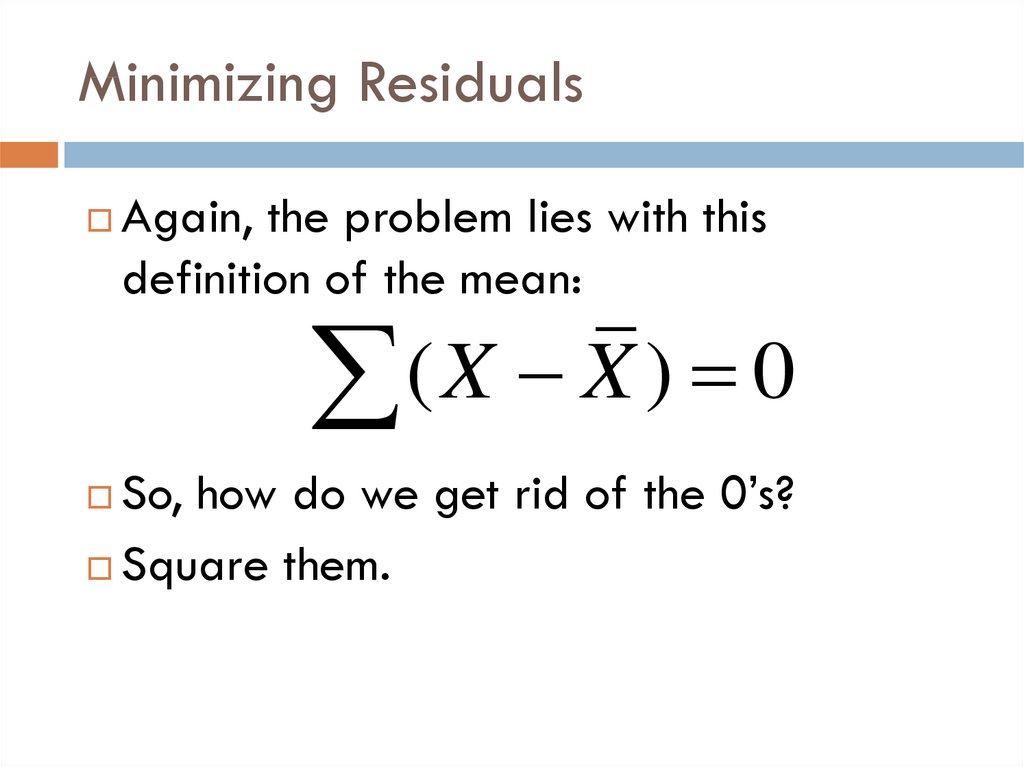
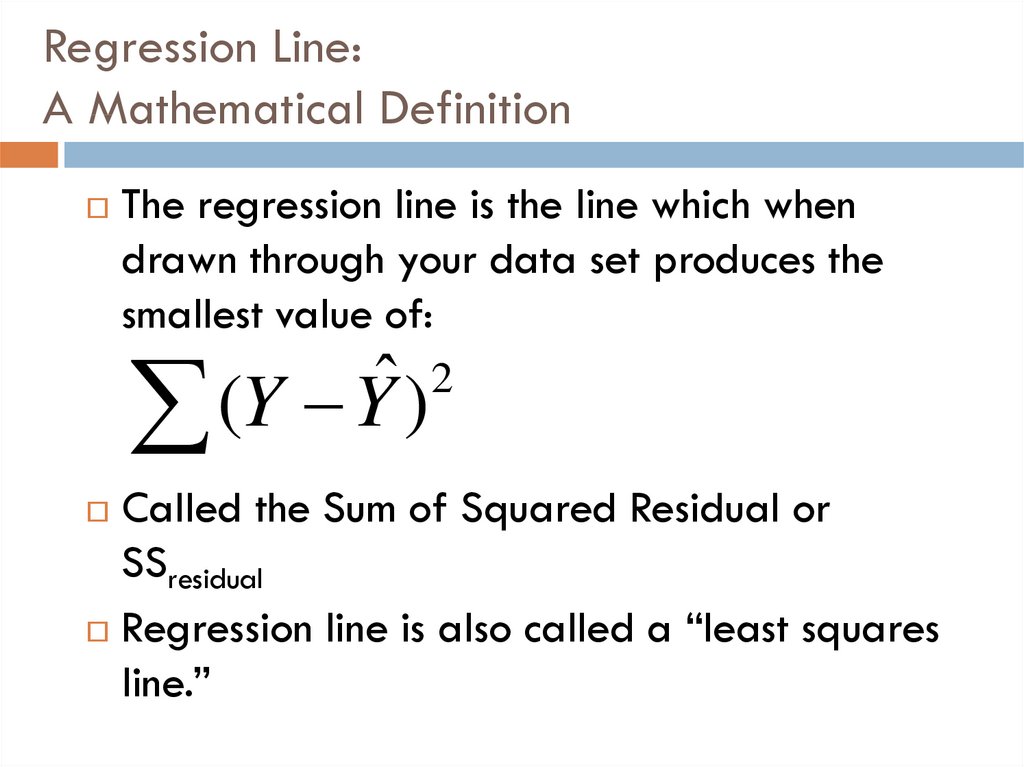
 mathematics
mathematics








